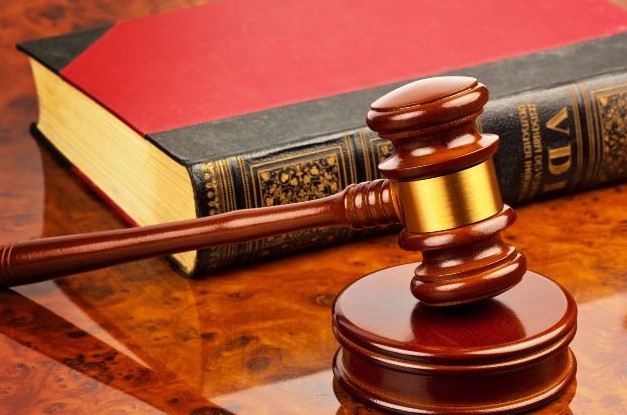Public Reporting of Monitorship Outcomes

When a organization engages in misconduct, thoughts typically come up in excess of no matter whether the corporation must deal with its have remediation exertion without the need of outdoors oversight and guidance. For the most egregious misconduct—conduct that is significant, pervasive, or widespread—a monitorship is usually imposed by the court docket or by using a settlement agreement in between the organization and the govt. For instance, in 2012, HSBC Financial institution United states of america N.A. and HSBC Holdings plc (collectively, “HSBC”) entered into a deferred prosecution agreement with the Office of Justice due to troubles with their money-laundering method and because of diligence tactics. As element of the settlement, HSBC entered into a company compliance monitorship for a period of five a long time. The HSBC monitor, as is true with most monitors, was required to present typical reporting to the governing administration and the business, but those reports, like most monitor stories, remained unavailable to the public.
Nonetheless, the problem of regardless of whether, and to what degree, monitors’ reports should be out there to the general public is hotly contested. In the circumstance of HSBC, the enterprise, the DOJ, and the observe all objected to the release of info to the public, stating that it would impede the monitor’s efficiency. Moreover, the observe expressed worries that releasing an interim report may possibly produce a “chilling effect” on his capability to do the job with HSBC workers through the harmony of the monitorship. Eventually, the 2nd Circuit blocked community obtain to the monitor’s report.
Just one might argue that the lack of community disclosure of the function completed through a monitorship term is suitable, for the reason that the Govt is supervising what goes on through the monitorship and making certain that all goes in accordance to system. As I element in my Short article, General public Reporting of Monitorship Results, nonetheless, governmental actors are typically unable to interact in great supervision of the do the job carried out by screens. Given this reality, I argue that at the summary of all monitorships the community should acquire an accounting that facts whether the business has or has not engaged in a effective remediation exertion. My proposed intervention does not call for a watch or company to flip over the styles of experiences that screens currently put together. It leaves the standing quo untouched. Instead, my proposal is that a new, more report be prepared for and launched to the public at the conclusion of each and every monitorship.
Aspect I of the Posting presents a primer on the use and part of displays and monitorships. I outline the term “monitor” and explain the 4 unique forms of monitorships that are utilised now: (i) standard, court docket-requested monitorships, (ii) enforcement monitorships, (iii) corporate compliance monitorships, and (iv) contemporary, court-purchased monitorships.
Section II discusses the difficulties of making an attempt to produce disclosure and oversight norms for present day-working day monitorships. The Portion begins by demonstrating how there is constrained data disclosure for many modern day-working day monitorships. Initial, data from the keep track of is usually blocked—either absolutely or partially—from currently being accessed by interested third events, often by acquiring a court purchase proscribing obtain to the monitor’s report. 2nd, monitors sometimes properly obtain, examine, and evaluate info, but are unsuccessful to disseminate that facts to specific intrigued events. Third, even where by the information is available broadly, it is usually not easily comprehensible by the public with no the assistance and guidance of an middleman to distill all that the keep an eye on has disseminated. The reluctance of all events involved—the DOJ, the company, and the monitor—to advocate for elevated information disclosure surely does not support. At the similar time, monitors run in a regulatory vacuum. Congress, courts, policymakers, academics, and the lawful career have all famous this lack of oversight and have engaged in actions to endeavor to build boundaries to govern the behavior of screens. These attempts, nonetheless, have mostly failed, resulting in the absence of official oversight governing today’s monitorships. The only regular constraints on observe habits are, hence, the arrangement or court docket buy that created the monitorship and the monitor’s individual track record.
Element III puts forth the thesis of this Short article and argues that, at the conclusion of all monitorships, a public report need to be disseminated that opines on regardless of whether the agency has or has not engaged in a productive remediation effort. This Component outlines 3 possible avenues of creating incentives for the use of this new reporting mechanism: (i) an act of Congress (not likely), (ii) an SEC disclosure mandate for community businesses, and (iii) a policy intervention from the Business of Management and Spending plan (OMB). This Part then discusses standardized features to involve in a community report that aspects the benefits of a monitorship, this kind of as the monitor’s evaluation methodology, standard data about the monitor’s function and reporting intervals to the governing administration, the identity of the keep track of, and an attestation of truthfulness by the keep track of. Drawing on company criminal offense and securities literatures, this Element then outlines why a public report may well be effective in furthering: (i) the typical public’s desire in information linked to corporate settlements (ii) shareholders’ rights to info and (iii) stakeholders’ passions in information and facts disclosure. This Part then discusses how a general public reporting mandate for monitorships could create an option for addressing the oversight complications as effectively as lead to the development of an moral floor of perform for displays.
Section IV turns to some added factors lifted by this Article’s argument and proposal. Initially, this Part argues that the challenges of disclosure and oversight are unlikely to be resolved by necessitating the stories that displays at present deliver to be turned over to the general public. A supplementary report is vital. Next, this Element addresses no matter whether the Article’s proposal will guide to a lessen in the selection of monitorships entered into concerning corporations and governmental actors. When this empirical dilemma is hard to solution based on currently available details, I argue that there are coverage rationales that advise any lessen would be de minimis. Third, this Element discusses how a community reporting mandate could raise shareholder activism and likely legal responsibility fears for general public organizations. I argue that the probable expenses of greater shareholder exercise are really worth it to accomplish elevated transparency about displays.
Displays are dependable for overseeing remediation endeavours throughout a wide variety of lawful and regulatory regions. Nevertheless, for the reason that courts, regulators, and prosecutors are not capable of properly supervising the do the job of displays, a quantity of worries linked to a deficiency of facts disclosure and oversight for present day-working day monitorships persist. The upshot of this Article is that community reporting of monitorship outcomes will deliver an essential option to make broader disclosure concerning the outcomes of monitorships and organizations’ successes or failures at employing remediation procedures, even though also producing options for additional official oversight of monitor conduct.
The full Write-up is offered in this article.







